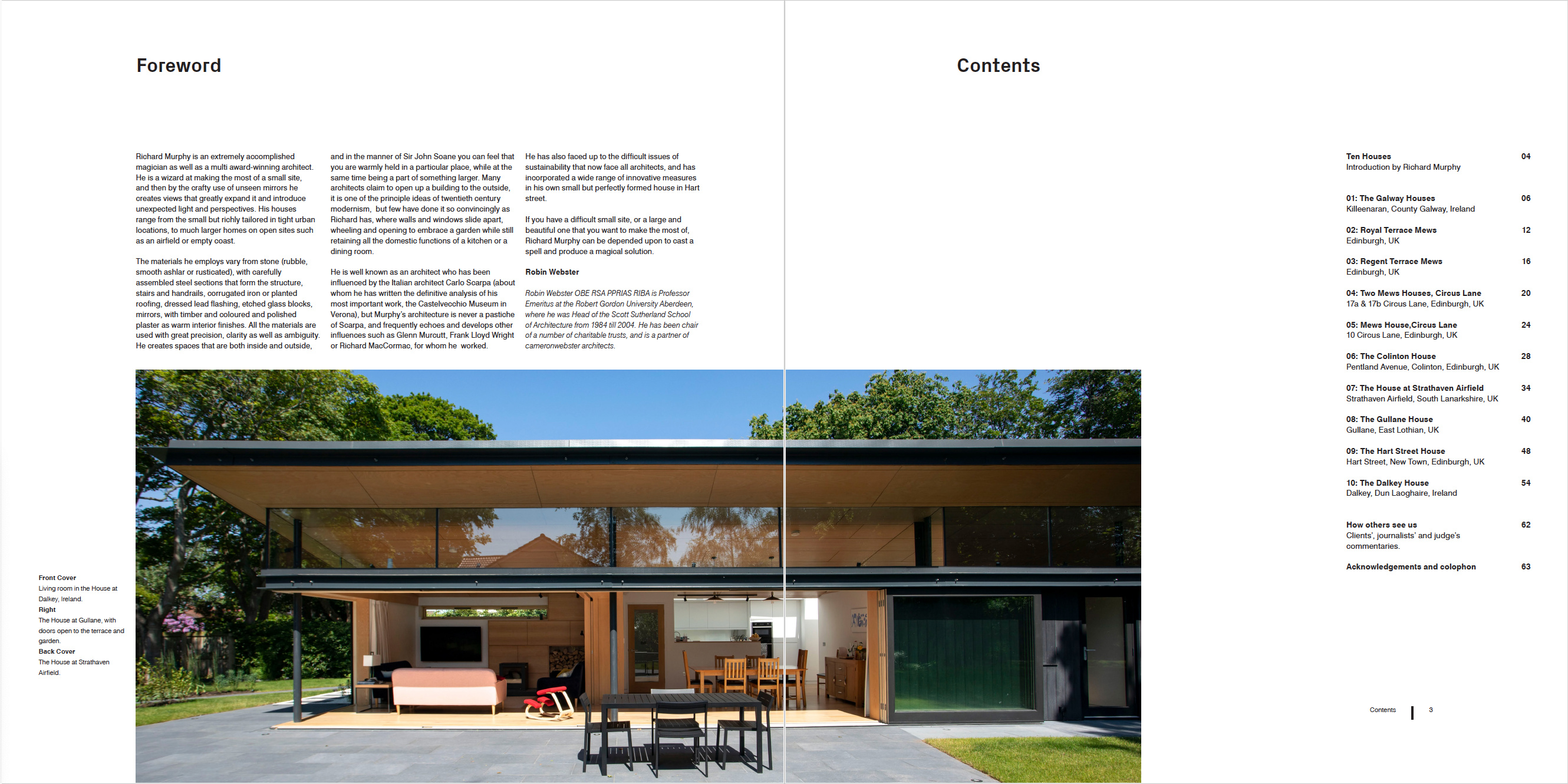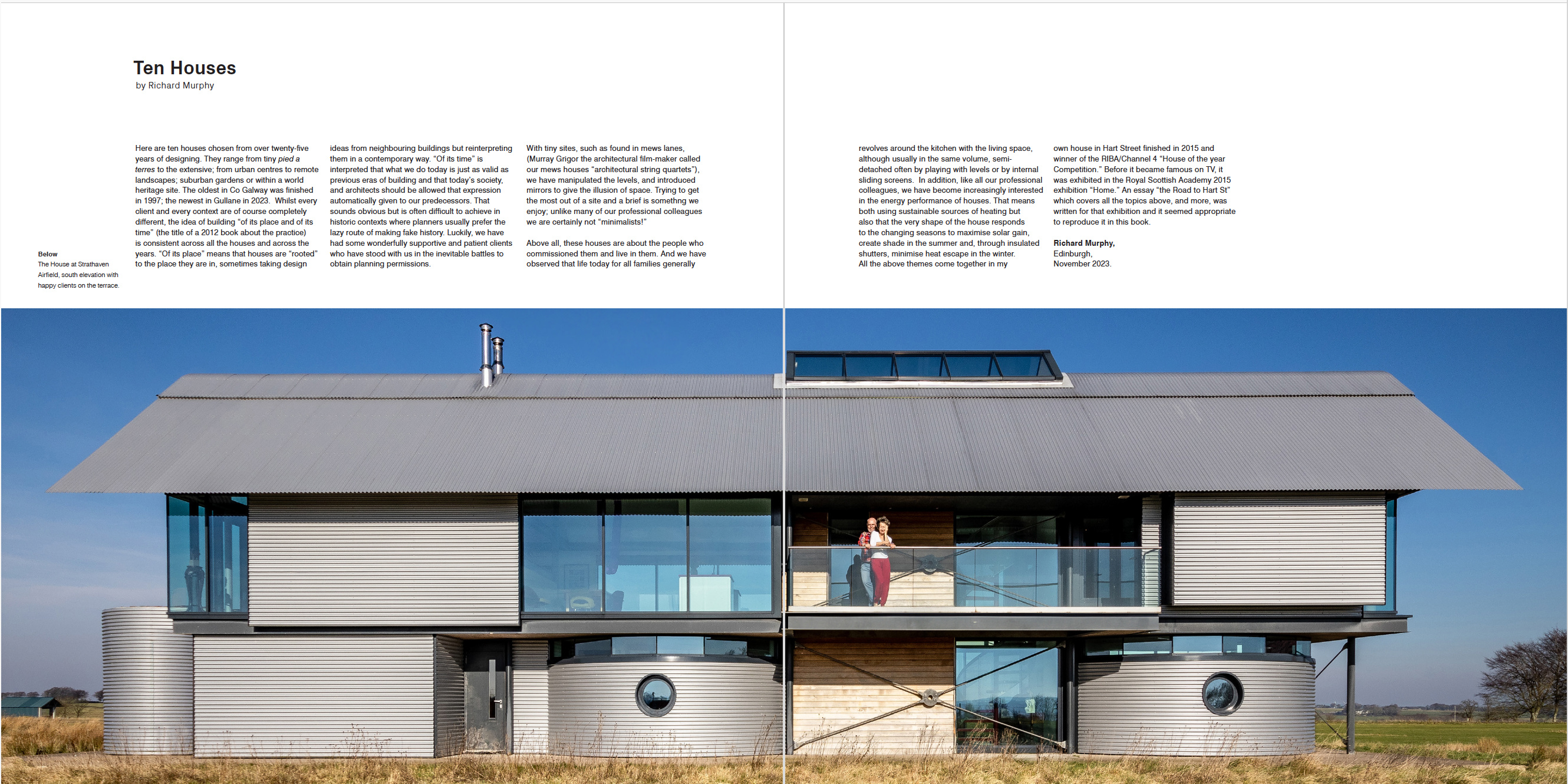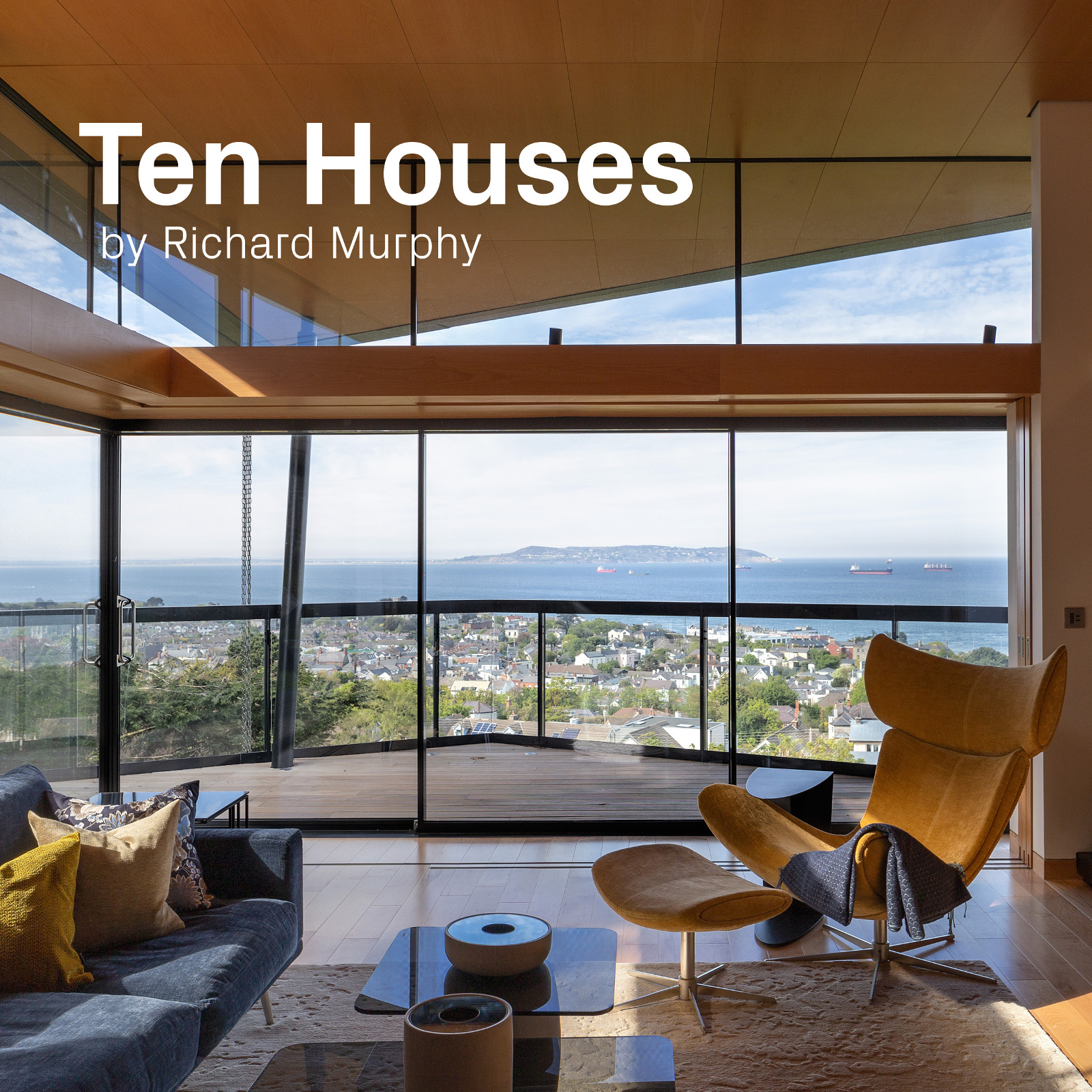Ten Houses
Richard Murphy, Richard Murphy Architects, 2023
Foreword

Richard Murphy is an extremely accomplished magician as well as a multi award-winning architect. He is a wizard at making the most of a small site, and then by the crafty use of unseen mirrors he creates views that greatly expand it and introduce unexpected light and perspectives. His houses range from the small but richly tailored in tight urban locations, to much larger homes on open sites such as an airfield or empty coast.
The materials he employs vary from stone (rubble, smooth ashlar or rusticated), with carefully assembled steel sections that form the structure, stairs and handrails, corrugated iron or planted roofing, dressed lead flashing, etched glass blocks, mirrors, with timber and coloured and polished plaster as warm interior finishes. All the materials are used with great precision, clarity as well as ambiguity. He creates spaces that are both inside and outside, and in the manner of Sir John Soane you can feel that you are warmly held in a particular place, while at the same time being a part of something larger. Many architects claim to open up a building to the outside, it is one of the principle ideas of twentieth century modernism, but few have done it so convincingly as Richard has, where walls and windows slide apart, wheeling and opening to embrace a garden while still retaining all the domestic functions of a kitchen or a dining room.
He is well known as an architect who has been influenced by the Italian architect Carlo Scarpa (about whom he has written the definitive analysis of his most important work, the Castelvecchio Museum in Verona), but Murphy’s architecture is never a pastiche of Scarpa, and frequently echoes and develops other influences such as Glenn Murcutt, Frank Lloyd Wright or Richard MacCormac, for whom he worked.
He has also faced up to the difficult issues of sustainability that now face all architects, and has incorporated a wide range of innovative measures in his own small but perfectly formed house in Hart Street.
If you have a difficult small site, or a large and beautiful one that you want to make the most of, Richard Murphy can be depended upon to cast a spell and produce a magical solution.
Robin Webster
Robin Webster OBE RSA PPRIAS RIBA is Professor Emeritus at the Robert Gordon University Aberdeen, where he was Head of the Scott Sutherland School of Architecture from 1984 till 2004. He has been chair of a number of charitable trusts, and is a partner of cameronwebster architects.
Ten Houses

Here are ten houses chosen from over twenty-five years of designing. They range from tiny pied a terres to the extensive; from urban centres to remote landscapes; suburban gardens or within a world heritage site. The oldest in Co Galway was finished in 1997; the newest in Gullane in 2023. Whilst every client and every context are of course completely different, the idea of building “of its place and of its time” (the title of a 2012 book about the practice) is consistent across all the houses and across the years. “Of its place” means that houses are “rooted” to the place they are in, sometimes taking design ideas from neighbouring buildings but reinterpreting them in a contemporary way. “Of its time” is interpreted that what we do today is just as valid as previous eras of building and that today’s society, and architects should be allowed that expression automatically given to our predecessors. That sounds obvious but is often difficult to achieve in historic contexts where planners usually prefer the lazy route of making fake history. Luckily, we have had some wonderfully supportive and patient clients who have stood with us in the inevitable battles to obtain planning permissions.
With tiny sites, such as found in mews lanes, (Murray Grigor the architectural film-maker called our mews houses “architectural string quartets”), we have manipulated the levels, and introduced mirrors to give the illusion of space. Trying to get the most out of a site and a brief is somethng we enjoy; unlike many of our professional colleagues we are certainly not “minimalists!”
Above all, these houses are about the people who commissioned them and live in them. And we have observed that life today for all families generally revolves around the kitchen with the living space, although usually in the same volume, semi-detached often by playing with levels or by internal sliding screens. In addition, like all our professional colleagues, we have become increasingly interested in the energy performance of houses. That means both using sustainable sources of heating but also that the very shape of the house responds to the changing seasons to maximise solar gain, create shade in the summer and, through insulated shutters, minimise heat escape in the winter. All the above themes come together in my own house in Hart Street finished in 2015 and winner of the RIBA/Channel 4 “House of the year Competition.” Before it became famous on TV, it was exhibited in the Royal Scottish Academy 2015 exhibition “Home.” An essay “the Road to Hart St” which covers all the topics above, and more, was written for that exhibition and it seemed appropriate to reproduce it in this book.
Richard Murphy,
Edinburgh,
November 2023.
Buy Now: £25.00

64 pages. Retailing at £25.00 with postage included to destinations in the UK and Ireland. £40.00 with postage included to destinations in the rest of the world.
Please contact sales@breakfastmissionpublishing.com if you have any queries.
